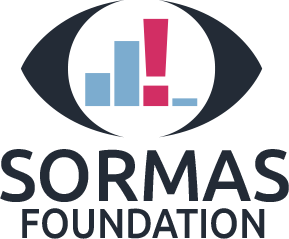SORMAS Conference 2023 - Berlin
The journey towards sustainability in open-source digital pandemic preparedness
1. Participants’ statistics
The SORMAS 2023 Annual Conference was attended by representatives from 16 countries, with a gender ratio of 21,2 % female and 78,8% male.
The types of SORMAS ecosystem groups included: users (38,5%), implementers (25%), regional/international organizations (21,2%), and others including IT companies, Global Goods, research institutions, and funders (15,3%).

2. Keynote & Panels
SORMAS Foundation’s first year presentation by Jan Böhme, Managing Director at the SORMAS Foundation, included the main activities carried out by the SORMAS Foundation in the first year since its establishment in October 2022.
It included the new vision and mission of the SORMAS Foundation:
Vision: A world in which all countries are prepared to respond to epidemics and pandemics digitally and collaboratively.
Mission: Build a strong community through development, promotion and implementation of open-source digital systems that support national and international organisations in early detection and containment of epidemics and pandemics.

It highlighted the main milestones achieved during this period:
- Transition of responsibilities from the Helmholtz Centre for Infection Research (HZI) to the SORMAS Foundation (e.g. documentation & repository)
- SORMAS Foundation team recruited and internal processes in place
- Projects started in different countries
- SORMAS community reinforced through online platform, webinars, newsletters and meetings
As well as the main objectives of the strategic plan in each of the SORMAS Foundation’s areas of work:
- Software curation: development of a SORMAS 2.0 version
- Training & Accreditation: establishment of the SORMAS Academy
- Support: development of the SORMAS regional approach and further dedicated support to countries
- Community building: continuous fostering of the global Community of Practice

Keynote by Dr Chikwe Ihekweazu, Assistant Director General at the World Health Organization (WHO) and lead of the WHO Hub for Pandemic and Epidemic Intelligence in Berlin.
Dr Ihekweazu began his presentation by highlighting the value of surveillance to support decision-making in addressing the increase in emergencies and threats worldwide and questioning the readiness of the global epidemic intelligence capabilities. He emphasized the growth of innovative activities in the past years and presented the role of the WHO Pandemic Hub to support these initiatives with better data and analytics to enable improved decision-making during the emergency management cycle.
He presented the collaborative surveillance concept that aims at strengthening the global architecture for health emergency preparedness, response, and resilience (HEPR) and specific programs related to open-source projects: the OSPO and EIOS.
The Open-Source Program Office (OSPO), which is the first of its kind at a UN agency, aims at being a center of excellence that supports WHO and its global partners to collaboratively develop and access sustainable and innovative open-source solutions for pandemic and epidemic intelligence.
The Epidemic Intelligence from Open Sources (EIOS) facilitates the global collaboration of partners from multiple sectors, supporting countries and other stakeholders to address future pandemic and epidemic risks with better access to data, better analytical capacities, and better tools and insights for decision-making.
- Panel 1: Open-source tools for Prevention, Preparedness and Response (PPR) – should Global Goods be the focus?
- Panel 2: Sustainability of open-source projects – what is the best model?
 The panel moderated by Dr Patrick Nguku (AFENET Nigeria Director) included Dr Natalie Mayet, Deputy Director of the National Institute for Communicable Diseases of South Africa, Dr Anne Vergison, Epidemiologist at the Direction de la Santé (Ministry of Health) in Luxembourg and Mr Samuel Mbuthia, OSPO Lead at the WHO Hub for Epidemic Intelligence, Berlin.
The panel moderated by Dr Patrick Nguku (AFENET Nigeria Director) included Dr Natalie Mayet, Deputy Director of the National Institute for Communicable Diseases of South Africa, Dr Anne Vergison, Epidemiologist at the Direction de la Santé (Ministry of Health) in Luxembourg and Mr Samuel Mbuthia, OSPO Lead at the WHO Hub for Epidemic Intelligence, Berlin.
The panel discussion started with the experience sharing from Luxembourg and South Africa on surveillance and outbreak management during the COVID-19 pandemic. This included the challenges and lessons learnt, as well as the reasons why Luxembourg decided to implement SORMAS as a national surveillance system.
 Dr Mayet reported that some of the key challenges in South Africa included the lack of appropriate surveillance systems and digital tools, workforce, and framework for decision-making. As lessons learnt, she highlighted the value of networks and connections (such as the International Association of National Public Health Institutes, IANPHI) that were previously established, and the engagement with users for the design of improved surveillance systems, that should follow the international regulations and be able to accommodate a high number of notifications.
Dr Mayet reported that some of the key challenges in South Africa included the lack of appropriate surveillance systems and digital tools, workforce, and framework for decision-making. As lessons learnt, she highlighted the value of networks and connections (such as the International Association of National Public Health Institutes, IANPHI) that were previously established, and the engagement with users for the design of improved surveillance systems, that should follow the international regulations and be able to accommodate a high number of notifications.
 Dr Vergison began her intervention by pointing out that, even though Luxemburg is considered a high-income country, it faces challenges due to its small size and the lack of human resources, such as in the IT area. In 2018, the Ministry of Health in this country started developing an in-house digital surveillance system. However, it did not have all the features needed (such as contact-tracing, that was still being done on the phone), did not include all notifiable diseases, and was not flexible and interoperable. In addition, it was not sustainable, because it was only maintained by two internal IT staff, that left at some point.
Dr Vergison began her intervention by pointing out that, even though Luxemburg is considered a high-income country, it faces challenges due to its small size and the lack of human resources, such as in the IT area. In 2018, the Ministry of Health in this country started developing an in-house digital surveillance system. However, it did not have all the features needed (such as contact-tracing, that was still being done on the phone), did not include all notifiable diseases, and was not flexible and interoperable. In addition, it was not sustainable, because it was only maintained by two internal IT staff, that left at some point.
All these reasons prompted the search for a more suitable system, and this is why the decision to implement SORMAS was made. Dr Vergison finalized her intervention highlighting that, in contrast to proprietary software, open-source tools have the advantage of being usually designed by users, and their community of practice is faster in solving problems.
 Mr Samuel Mbuthia shared his previous experience building open-source communities and explained the experience of WHO during the COVID-19 pandemic during which software developers started volunteering with contributions on GitHub. This work was, however, not necessarily translated into effective or cost-effective solutions that would make a real impact. This is one the reasons why the OSPO was established: it should help to get the best practices from open-source tools, bring expertise together in a team that can provide support, and work with member states for them to get the maximum of the open-source tools. Mr Mbuthia finalized his intervention by underscoring the importance of understanding countries’ needs, tailoring digital solutions to them, and ensuring their ownership, as well as the importance of WHO’s role in the area of interoperability and standards.
Mr Samuel Mbuthia shared his previous experience building open-source communities and explained the experience of WHO during the COVID-19 pandemic during which software developers started volunteering with contributions on GitHub. This work was, however, not necessarily translated into effective or cost-effective solutions that would make a real impact. This is one the reasons why the OSPO was established: it should help to get the best practices from open-source tools, bring expertise together in a team that can provide support, and work with member states for them to get the maximum of the open-source tools. Mr Mbuthia finalized his intervention by underscoring the importance of understanding countries’ needs, tailoring digital solutions to them, and ensuring their ownership, as well as the importance of WHO’s role in the area of interoperability and standards.
The panel discussion was followed by questions and participation from the audience.
 Moderated by Dr Pilar Hernandez (Managing Director at the SORMAS Foundation), the panel was composed by Dr Rimamdeyati Usman Yashe, Head of the Event-Based Surveillance & Community-Based Surveillance (EBS/CBS) at the Nigeria Centre for Disease Control (NCDC), Mr Ulrich Ahle, CEO of the FIWARE Foundation, and Dr Wolfram Morgenroth-Klein, the Head of the Division Pandemic Prevention and One Health from the Federal Ministry for Economic Cooperation and Development of Germany (BMZ).
Moderated by Dr Pilar Hernandez (Managing Director at the SORMAS Foundation), the panel was composed by Dr Rimamdeyati Usman Yashe, Head of the Event-Based Surveillance & Community-Based Surveillance (EBS/CBS) at the Nigeria Centre for Disease Control (NCDC), Mr Ulrich Ahle, CEO of the FIWARE Foundation, and Dr Wolfram Morgenroth-Klein, the Head of the Division Pandemic Prevention and One Health from the Federal Ministry for Economic Cooperation and Development of Germany (BMZ).
With the objective of looking at sustainability questions from different angles, Mr Rimamdeyati Usman Yashe began by talking pointing out at that main barriers for sustainability in countries are the lack of adequate funding, followed by poor inter- and intra-governmental collaboration and ownership. To address these challenges, he highlighted the creation of strategic partnerships and collaboration, efficient use of budgets and countries having a roadmap to which funding organizations can align to. Lastly, he mentioned the importance for the constant improvement of the tool, always user centric.
 Following the discussion, Mr Ahle explained the business model of the FIWARE Foundation which, as a non-profit organization, bases its funding not only on projects but on a membership system. He emphasized that a sustainable open-source ecosystem has to be diverse and composed of many different actors.
Following the discussion, Mr Ahle explained the business model of the FIWARE Foundation which, as a non-profit organization, bases its funding not only on projects but on a membership system. He emphasized that a sustainable open-source ecosystem has to be diverse and composed of many different actors.
In his intervention, Dr Morgenroth-Klein explained that the BMZ has bilateral cooperation with more than 60 countries, but it also supports initiatives at the global level, including the World Bank, WHO, UNICEF, UNDP, and others, with the goal of improving the fragmented global health architecture. He emphasized that, even though public interest in pandemic prevention has currently decreased, this topic is still a priority for the BMZ. Therefore, it will support the further development of SORMAS 2.0 and focus on One Health, among other things. He finalized by concluding that the advantage of open-source software is the openness of discussions and transparency but, even though new funding initiatives like the Pandemic Fund will keep their focus in strengthening disease surveillance in general, there’s still a funding gap of open-source solutions.
The panel was followed by an interactive Q&A session with participation of the audience.
3. Country & Research presentations
The country presentations of Ghana, Nepal and Djibouti were moderated by Christin Walter (Community Manager at the SORMAS Foundation). All presentations included information regarding the SORMAS implementation, their individual experiences, challenges and lessons learnt.
After each presentation, an interactive Q&A session was conducted.
The first country presentation for Ghana was given by Dr John Ekow Otoo from the Ghana Health Service. He reported on the adaptations within SORMAS regarding the anthrax and rabies modules and that two regions for the pilot were selected (Greater Accra for Cholera and Upper West Region for meningitis). The SORMAS pilot started in 2019 and covers 40 districts in two regions (Greater Accra and Upper West Region). He reported on the success in Ghana and showed the increasing numbers of SORMAS user accounts over the time. Dr John Ekow Otoo also draw the attention to the challenges they faced: logistics (including tablets and internet access), workforce, and application development and upgrade. He also referred to the transition from a manual reporting system to a new customised electronic system (SORMAS), and the delay in implementing some changes once the system was already in production. After this, he presented the way forward with SORMAS, including implementation strategies and a transition plan.


The presentation on Nepal was given by Mr Koshal Subedee from the Ministry of Health in this country. He also presented the progress of the SORMAS implementation in Nepal, the challenges and the way forward. Therefore, he first gave an overview of the health structure and institutions in Nepal and afterwards explained the framework for surveillance and response. In addition to that, Mr Subedee presented the overall SORMAS architecture in Nepal and showed the progress of the implementation process using a timeline. He also mentioned some challenges: administrative and financial aspects, interoperability of SORMAS and EWARS, sustainability and scale-up, jurisdiction of three tiers of government for the implementation of foreign projects and aligning SORMAS with an existing surveillance system. He then concluded his presentation with an explanation of the way forward.
The country presentation for Djibouti was done by Mr Afework Kassa, M&E officer at the IGAD Secretariat in Djibouti. He started with an introduction of the stakeholders and showed the four initially involved countries of the IGAD region (Djibouti, South Sudan, Sudan and Somalia) and gave an overview of the current status of the implementation of SORMAS in Djibouti. Afterwards he presented the implementation plan and provided information on the current situation. He closed his presentation with an overview about their lessons learnt.
After the country presentations, Dr Bernard Silenou from the Helmholtz Centre for Infection Research (HZI) presented the statistical module SORMAS Stats to the audience. He focused on the different challenges regarding statistical analysis and the solution with SORMAS Stats. He explained several use cases for SORMAS stats, such as user-defined data export, modelling to estimate epidemiological data or situation reports. He then provided information about the technology and the system architecture. At the end, Dr Silenou showed the benefit of the transmission network diagram in SORMAS and underlined the advantages of SORMAS Stats.

4. Unconference Sessions
Unconference Session 1: What would you like to see in SORMAS 2.0?
a) One Health
In considering One Health as a key factor for the design of SORMAS 2.0, the group highlighted the importance of collaboration with other sectors like the environment and animal health, and the need to work closely together with them in the design of the new system, bearing in mind the vital role they play in pandemic prevention and control of epidemics.
User decision also to be made from the onset to include roles for animal health and environmental health officers.
Non-censoring mechanisms and user access should also be considered to allow exchange of needed data points between all the sectors within the platform.
The feasibility of training these other One Health players in mastering the platform to encourage adoption is also highly recommended in the process of the design of SORMAS 2.0.

b) Interoperability
In the unconference session group on interoperability, the following key points were discussed:
Policy/Political Will: The importance of political support and policy initiatives to drive interoperability efforts should be considered in the framework of designing SORMAS 2.0.
Use of API Integrator Beyond Bilateral Integration: Exploring the potential of API integrators for more extensive integration beyond bilateral relationships is crucial to position the system for multi-lateral demands that would arise from regional and user countries.
Standard Definition and Coordination: Emphasizing the need to define and support standards and discussing who should coordinate stakeholders in setting these standards is critical to ensure that the new version will be robust and meets global standards.
Continuous Communication and Collaboration: Highlighting the significance of ongoing communication, collaboration, and coordination among stakeholders for successful interoperability.
Data Quality: Recognizing the critical role of data quality in ensuring effective interoperability. The desire to maintain data quality and to improve data quality should be one of the driving forces of the implementation of interoperability mechanisms within SORMAS 2.0.
Country-Level Technology Requirements: Considering the unique technology requirements of different countries in interoperability efforts should also play a vital role in implementing the instruments that would support interoperability in SORMAS 2.0.
Middleware as a Short-Term Gap: Discussing the use of middleware as a temporary solution to bridge interoperability gaps pending until the robust SORMAS 2.0 will be fully designed and implemented. This was suggested also to be implementable for countries or solutions not as complex as SORMAS, to allow for a near-seamless integration when the need arises.
Data Analytics and Visualisation: Recognising the value of data analytics and visualisation in making the most out of interoperable data. Data analytics was suggested as a strong requirement in implementing SORMAS 2.0 and its ability to interoperate with other systems.
Finally, SORMAS 2.0 should be positioned as a complementary and integrable system in the bigger overall picture of global health security rather than as a competitor to other similar systems in the area of pandemic preparedness.
The team put forward these points to illustrate the multifaceted nature of interoperability, which involves technical, political, and organizational aspects to enable effective data exchange and collaboration. The conversation would give the SORMAS Foundation a deeper insight into the key requirements to be considered when fostering interoperability as SORMAS 2.0 is designed and developed. These also would serve as guidance to countries implementing SORMAS on how to approach interoperability within their local in-country needs.

c) Improvement of data analytics
The group on data analytics stressed the importance of data analytics and its critical inclusion in the SORMAS 2.0 version. It gave an overview of the current statistics module in SORMAS, highlighting the ability to view for example data for number of cases of diseases at regional and district levels, but not at health facility level. This feature was strongly advocated for inclusion in the new version.
The current limited number of variables that statistics can be performed with should be expanded to include as many variables collected as possible, to give a richer/wider possibility of analytics that can be performed within the system.
The dashboard’s flexibility should be enhanced to enable users to configure certain filters and save for auto-generation of desired charts, graphs and outputs necessary for routine reports or decisions.
The current statistics module which only supports case-based analytics should be expanded to include aggregate analytics based on aggregate reported data within the platform.
The algorithm for 7-1-7 strategy and timeline of when an event is identified up until when the event is closed should be included in SORMAS 2.0.

Unconference Session 2: What are your ideas for the sustainability of SORMAS in countries and of SORMAS as a Global Good?
a) Partnerships with funding organizations
The group discussed on the objectives of funding organizations by picking one of the SDGs (Sustainable Development Goals) and running with it. For the sustainability of SORMAS, alignment to the SDGs targeted by funders is very important.
The SORMAS Foundation and countries should clearly show the strategies and the roles surveillance plays in guaranteeing that major SDGs are met. These clear frameworks can then be presented by countries to funding partners to give them a clear picture of what the needs are, and how they can fund value and impact-driven solutions such as SORMAS.
More publicity work needs to be done about SORMAS, showing the impact and the success stories of countries that already implementing it, and to help strengthen the resolve of countries that are still struggling with their surveillance systems and need such a solution. This in turn will position them to make a case to their funding partners to support SORMAS and its implementation.
The SORMAS Foundation is encouraged to study countries’ systems and then highlight the gaps within existing systems that SORMAS can complement, which is as a strong indication that these countries can meet their IHR mandates if they implement SORMAS to address these gaps. Countries can then explore funding options along these strong recommendations.
The SORMAS Foundation should increase engagement with the US government funding agencies strategically by showing the value of the system, and by creating awareness for countries that are already implementing SORMAS and countries that are showing interest in implementing SORMAS.
WHO can also serve as an encourager of countries who are now implementing SORMAS by rolling out frameworks and guidance around the pathways to sustaining digital open-source systems like SORMAS, as it helps countries meet their IHR mandates.
Countries are encouraged to support the continuous curation of the SORMAS platform by making direct requests to funding agencies for the SORMAS Foundation as an umbrella body, to promote the community’s approach of give and take.
Collaboration and country level interaction for the continuous growth of SORMAS in various countries can be seen and is laudable. However, Public Relations work needs to be done to engage the high-level donors to include SORMAS as a requirement in funding announcements for some of the grants geared towards surveillance and pandemic preparedness.
IT workforce in countries should be strengthened with regards to capacities of development of SORMAS to further promote the knowledge base of SORMAS users and developers in countries as a strategic sustainable measure.

b) Partnership with universities and research institutions for SORMAS development
The need to develop master and PhD programs on SORMAS in universities and research institutions is highly encouraged to sustain capacity building and the growth of SORMAS in many countries.
Ideas to align academia with a research agenda with countries to understand their needs and sourcing international funding for such a research agenda, linking scientific questions that the research may be able to answer can help add weight to such proposals. Engagements to also build capacities within the institutions around SORMAS is also encouraged.
Implementing hackathons is also encouraged as a quick way to add value to the SORMAS community. Bringing people together to brainstorm is advantageous as bright minds come together within the ecosystem to promote collaboration that can lead to innovations for the growth of SORMAS. Prototype solutions that can lead to longer projects that keep the community going are usually a gain from this.
Advocating for a new model of scientific recognition that shifts from long academic article publication struggles that delay innovation. Looking to ways of including PhD or Masters’ students in ongoing outbreaks to enable them to carry out operational research or implementation research using SORMAS that really links them to a more practical approach to showcasing their work.
It is interesting to develop mixed module cohorts of courses that bring together IT and epidemiology students to help build a common language around SORMAS and to create innovative ways of thinking about how to address emerging disease response strategies – rethinking the way that we collect case-based data and structure data instruments.
Integrating a SORMAS module into field epidemiology programs is highly encouraged as a good way to incorporate SORMAS into the academia space.
c) Ownership
Government commitment and responsibility through ownership is highly encouraged as the main key to the sustainability of SORMAS in any country.
Power and legitimacy through legal backing of acts and regulations to support the system as a rudimentary part of the countries’ surveillance system and approach to disease response.
Good governance is also critical to ensuring that such a system is sustained within a country.
Accountability by government to stakeholders who are investing in strengthening the health sector, helps to build trust and attracts more support from external funding sources.
Governments’ active participation in growth strategies and coordination at various levels in terms of resource mobilization and transparent distribution across the various levels can also put high value on SORMAS and will help to sustain its use in the countries.
Countries are encouraged to also come up with a sustainability plan following on the heels of policies to further entrench the existence and continuous adoption of SORMAS through change in governments that are inevitable.
Finally, funders believe in governments showing ownership and are mostly encouraged to continue providing support when they see governments’ buy-in and concrete adoption through policy documents and apportioning of recurrent budget lines out of government streams to sustain basic maintenance of the platform post-deployment and onwards.
5. Feedback & Conclusions
Overall, participants expressed 83,6 % satisfaction with the conference (4,18 out of 5 points), being the most valued the contents and activities of the conference, as well as the opportunities to participate, ask questions and network. In addition, the openness of the discussions and the freedom to address challenges was valued very positively, as stated by some participants: “I liked the flexibility and collaborative and relaxed atmosphere”, “I like the opportunity to break up into small groups to discuss issues”.
The less rated category was the logistics, with participants requesting a bigger and more comfortable venue for the next conference.
Overall, 90% of the participants who filled in the survey would like to participate in the SORMAS conference next year.
The figure below shows the points given by participants to each category in an online survey at the end of the SORMAS Annual Conference 2023.

In conclusion, there is a clear appetite for the next SORMAS Annual Conference that should last longer (2-3 days) with more time for interaction and country presentations, in a suitable venue able to comfortably accommodate a larger number of participants.
In order to reach this goal, external funding and support from countries is being sought so that the organization of the next SORMAS Annual Conference does not depend solely on ticket sales.




